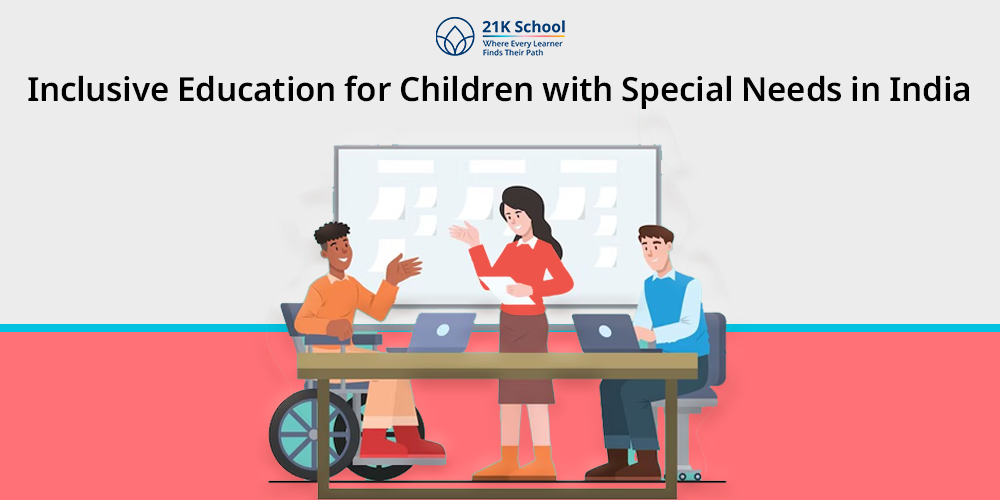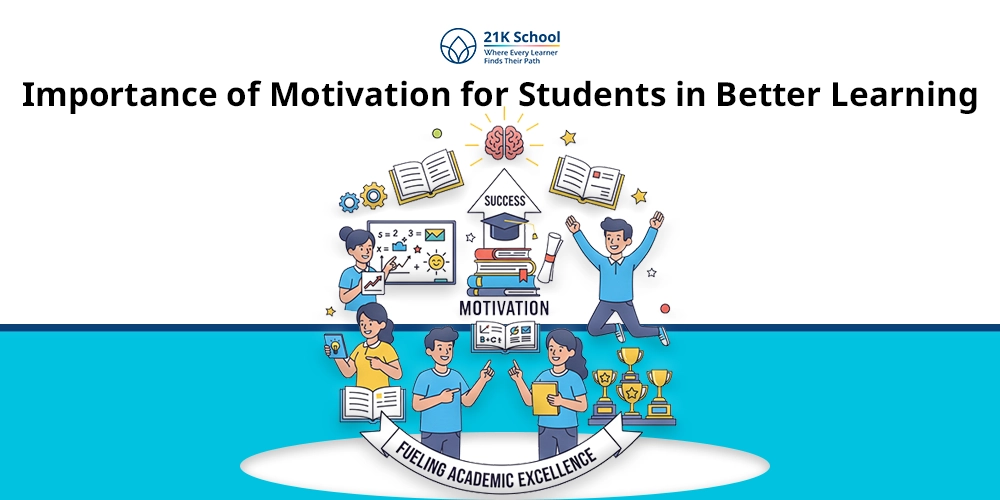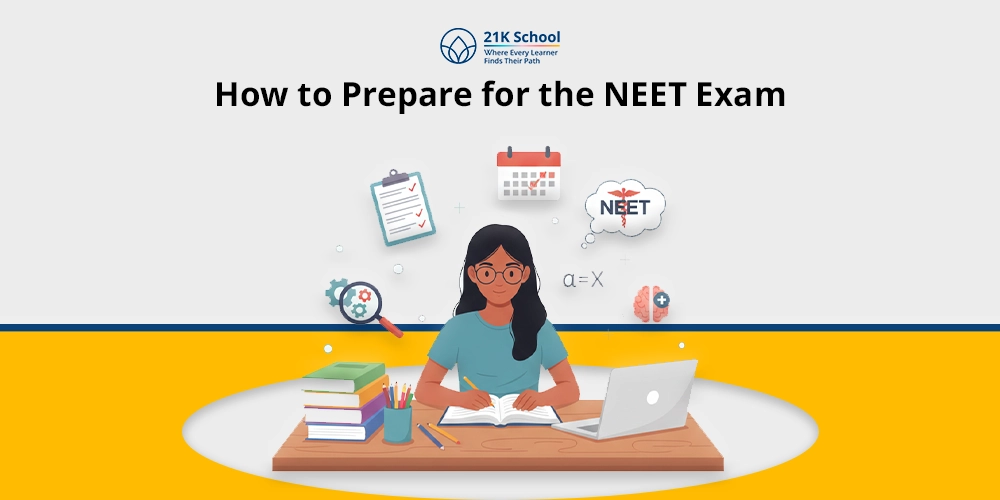
Education is a human right and a source of empowerment to people and governments. Access to quality education is not only critical, but also life changing to children with special needs (CWSN).
Inclusive education is a method that makes sure children of all conditions are equally managed and provided learning. Be it physical, intellectual, social, emotional, linguistic, or otherwise are all taught in the same classroom.
It appreciates diversity and the individual input each and every child makes in the classroom. Inclusive education not only helps children with disabilities but even improves the learning experience of all learners.
This article takes you on a journey of inclusive classroom that fosters development of every child, regardless of their abilities.
Contents
- What is Inclusive Education?
- Who are Children with Special Needs (CWSN)?
- Importance and Benefits of Inclusive Education
- Key Concepts of Inclusive Education
- Central Features of Inclusive Classrooms and Systems
- Legal and Policy Framework in India
- Important Elements of Inclusive Education for CWSN
- Challenges in Implementing Inclusive Education
- Overcoming the Challenges
- In Conclusion
What is Inclusive Education?
Inclusive education is a for children with and without disabilities in the same classroom, providing suitable sitting and assistance.
It is premised on the fact that all children deserve quality education in a learning ecosystem that favors their uniquenesses.
Instead of isolating children with disabilities in distinct schools or groups, inclusive education aims at taking down obstacles. It also focuses on promoting learning and participation within the general setting.
Inclusive education is anchored in the fact that diversity enhances the learning climate. It advocates equality, inclusion, and quality education to everyone.
This direction entails a flexible, responsive, and adaptable educational system which can meet the diverse needs of all learners.
Who are Children with Special Needs (CWSN)?
Children with Special Needs (CWSN) are children who have high learning barriers like physical, intellectual, sensory, emotional, behavioral, or developmental. This group can have children who developed:
- Vision, ear or speech problems
- Autism
- Cerebral palsy
- Down syndrome
- Learning disabilities (e.g. Dyslexia, ADHD)
- Mental illnesses
- Multiple disabilities
The learning process might also need CWSN to be given more assistance in order to engage in it. These requirements may be in the form of minor adjustments to intensive one-on-one support.
It is important to consider them and meet such inclinations with inclusive practices in order to grant them a right to education.
Importance and Benefits of Inclusive Education
Inclusive education has moved mountains when it comes to educating learners despite their developmental vulnerabilities. There are various aspects of growth that became possible due to it.
1. Encourages Equality and Human Rights
Inclusive education celebrates the rights of every child to educate together. It questions social standards and even biases which in most cases isolate children with disabilities.
Inclusive classrooms facilitate mutual respect and understanding. This can weaken discriminatory attitudes, as well as introduce equity and equal opportunities to every student.
2. Promotes Social Integration
The social integration is one of the main benefits of inclusive education . Learning of children with and without disabilities leads to friendship, empathy and cooperation.
Children are taught to welcome and appreciate differences. And this prepares a more accommodating and accepting society as they grow up.
3. Builds better life and academic skills
If aided with inclusive education, students will be able to realize academic success and to learn the needed life skills. This would include communication, independence and problem-solving
Inclusive education gives children with special needs a chance to enjoy the same curriculum as those of their other mates. Additionally, inclusive environments also make pupils ready to face life, where they communicate and co-operate with different types of people.
4. Trains All Students for Real Life
Inclusive classrooms resemble social diversity. They condition every student, including those of low abilities to succeed in multicultural workplaces and society.
Being exposed to various abilities and learning method promote creativity, flexibility, as well as cooperation among students.
Key Concepts of Inclusive Education
The inclusion of education follows a number of principles:
- Equity and Access: Every child should get quality education regardless of his abilities and background.
- Participation: All children must be involved positively and guided on an active learning process.
- Support and Flexibility: Learning and teaching techniques ought to be flexible to accommodate the different needs of learners.
- Valuing Diversity: Variances are recognized among the learners and it is perceived as positive rather than as a shortcoming.
- Collaboration: Effective instruction needs a working relationship among individuals, specialists, parents, and the Juvenile community.
Central Features of Inclusive Classrooms and Systems
A good inclusive education system has a number of things that are apt to helping CWSN:
1. Description and Evaluation
Disabilities and learning needs should be identified early enough. Educational institutions should introduce screening and evaluation systems to identify learners with possible educational needs and prepare individual lesson schedules.
2. Individualized Support
Inclusive classrooms offer individualized interventions depending on the particular needs of every student. This can be in the form of resource rooms, special educators, speech therapy, assistive technologies or peer support programs.
The aim is to accommodate a child with the amount of accommodations required without segregating the child.
3. Accessible Infrastructure
Inclusion requires physical accessibility. Schools are supposed to have ramps, accessible toilets, braille signages and proper classroom furniture.
Digital inclusion, say, through screen readers or captions, also plays an instrumental part in inclusive e-learning .
4. Teacher Training
The role of teachers in inclusive education is very crucial. They should know how to identify various learning needs, apply automated instructions, deal with inclusive classrooms, and work with special educators.
Professional development and assistance should always be maintained.
5. Cooperation and Coordination
Inclusive education does involve collaboration. The cooperation of general teachers, special educators, therapists, school counsellors and parents makes child support more holistic and uniform.
The regular meetings and communications should be formed to coordinate efforts.
6. Adaptable Program and Instructional Practice
Curricula should be flexible in order to take into account the learning disorders and styles. UDL principles must be included and provided with the multiple means of representations, engagements, and expressions.
These activities must be diverse and ought to include everyone by enabling every student to be involved.
7. Positive Behavioral Support
Proactive and supportive strategies of behavior management are applied in the inclusive classrooms. Instead of anything punitive, schools need to emphasize on positive behaviour reinforcement, reasons behind behavioural problems, and skills in self-regulation.
Educators must understand the behaviour problems in schools that should be taken under consideration for students.
8. Parental Involvement
Parents play a major role in the education of a kid. They have better suggestions and participation in planning and support.
Regular meetings, workshops, inclusive school events are the ways schools should approach parents of CWSN. Everyone should be aware of the role of parents in students for better execution of these ideas.
Legal and Policy Framework in India
India has moved a long distance in inclusive education by making a variety of stipulations and guidelines:
1. Right to Education (RTE) Act, 2009
The RTE Act has ensured that every child between the age of 6-14 yrs gets free and compulsory education. It requires that children with disabilities are included in ordinary schools.
And that there should be barrier-free access, curriculum and trained teachers.
2. Rights of Persons with Disabilities (RPWD) Act, 2016
Rights of Persons with Disabilities (RPWD) Act, 2016, enhances disability rights of individuals with disabilities. It requires inclusive education provisions on CWSN at all levels, reasonable accommodation, accessibility to trained professionals, and educational materials.
3. National Education Policy (NEP) 2020
The NEP 2020 pays a lot of focus on inclusiveness and equity in education. It acknowledges the necessity of providing children with different abilities and learning disabilities .
The policy advances the assistive technology, inclusivity pedagogy and the hiring of special educators in school.
4. Samagra Shiksha and Sarva Shiksha Abhiyan (SSA)
Some major government schemes to universalize elementary education are the SSA and the Samagra Shiksha. They have elements particularly directed toward CWSN, like resource support, assistive devices, teacher training, inclusive infrastructure development.
Important Elements of Inclusive Education for CWSN
To guarantee the use of children with special needs, a number of crucial elements are required. Mostly, in establishing an atmosphere in which every student can flourish.
1. Inclusive Curriculum
An inclusive curriculum is where all the students (CWSN included) are able to learn and attain its goals as well. The curriculum must be dynamic, giving more paths or ways of learning to favor the strengths, needs, and interests of learners.
It ought to use diverse teaching plans, including project-based learning , differentiated instruction, and usage of assistive technologies.
Its accommodations can involve change of format of textbooks, audio-visual learning resources, and the assessment facilities. These must be based on the ability to accommodate the child with special needs.
2. Accessible Infrastructure
School buildings should be made in a way that accommodates the needs of different students including the disabled ones. This comprises easily accessible classrooms that have proper facilities in terms of furniture, ramps, elevators and accessible toilets.
Investment in technology like digital equipment and software to accommodate children with disabilities should be incorporated. Gadgets like screen readers and hearing aids, speech-to-text programs should be also encouraged in schools.
An optimal school setting enables moving around school in a way disabled children can get involved in classroom learning.
3. Special Educators and Support Staff
Special educators are very important for providing CWSN with the unique attention that they require in achieving academic success. The professionals learn the requirements of students with different disabilities, such as intellectual, sensory, or developmental impairment.
Within an integrated classroom, special educators can cooperate with other teachers as well. They can do it to fit lesson plans, frame Individualized Education Plans (IEPs), and directly assist students with special needs.
Other support staff involve speech therapists, occupational therapists and psychologists who collaborate with educators to meet students’ various needs.
4. Assistive Technologies
Assistive technologies include everything which children with disabilities can use in classroom activities. It can also be used to access the curriculum in a manner that suits them individually.
An example here is that children with visual impairments can use screen readers and braille items. Moreover, children with reading disabilities can use text-to-speech software.
Augmentative and alternative communications (AAC) helps children with speech impairment express themselves. Schools that integrate assistive technologies achieve an inclusive education environment such that students with disabilities can learn and thrive.
5. Parent and Community Involvement
When schools, parents, and the community work closely together, inclusive education has a chance to succeed. Parents of CWSN can provide important information on child needs and strengths, as well as preferences.
It is crucial to the success of inclusive education that they be involved in the education process. Which means regular communication, attending meetings and assisting in developing IEPs.
In addition, NGOs, local governments, and community organizations are a great source of resources, training, and awareness programs. They can promote inclusion in schools.
Challenges in Implementing Inclusive Education
In spite of the advantages, the successful implementation of inclusive education, especially in the case of CWSN, has a number of challenges. These limitations also need to be addressed so that inclusive education becomes a reality in the times to come.
1. Lack of Trained Teachers
One of the most influential obstacles to the effective administration of inclusive education is the scarce amount of special educators. A lot of the ordinary teachers lack the abilities to address the needs of different CWSN.
They might lack knowledge or skills to establish an inclusive classroom setting. Or to modify the curriculum to be used with children with disabilities.
Teachers need to be empowered by providing professional development programs . All aimed at inclusive education experiences, differentiated instructions, and using assistive technologies.
Here’s how teachers can help students with learning disabilities .
2. Inadequate Infrastructure
Despite the well-known significance of accessible infrastructure, a significant number of schools have not received relevant facilities to accommodate CWSN.
Poor access to ramps, accessible toilets, adaptive seating or assistive technologies are some of the impediments to children with disabilities. Especially to access school activities fully.
The government/school management should spend resources in making schools infrastructure friendly and open to all students.
3. Social Stigma and Peer Discrimination
Social discrimination and stigma by peers are also a big issue faced by CWSN in general classrooms. Most children with disabilities are either bullied or isolated by their peers.
This affects their mental health and performance in schools. The most important step in eliminating these problems is building an inclusive school culture of celebrating diversity and respecting differences.
Combatants of stigma include anti-bullying programs, peer sensitization workshops and encouraging inclusive values.
4. Poor Integration of IEPs
Individualized Education Plans (IEPs) play an instrumental part in having CWSN get the right accommodation and support. Nevertheless, IEPs are often done poorly because of insufficient trained personnel, resources, or follow-up in a lot of instances.
Teachers, special educators, and parents should collaborate regularly to make sure that the objectives mentioned in IEPs are achieved. And that children obtain individualized support they require.
5. Limitation to Finances and Resources
Inclusive education should be well financed to take care of resources, staff development and infrastructure enhancements. Nonetheless, budgetary constraints in most schools particularly in the underserved regions impairs the capacity to avail the required support to CWSN.
Governments and schools should allocate more funds to inclusive education programs. So that no child is left behind in their education no matter their capacity levels.
Overcoming the Challenges
The following are the steps that should be undertaken to deal with the challenges encountered in carrying out inclusive education:
1. Investment in Infrastructure and Resources
The government and the school authorities have to spend on creating schools that are resourceful and physically accessible. These are ensuring that infrastructure is improved with features such as ramps, accessible toilets, and the acquisition of assistive technologies.
Also, a classroom should be furnished with learning materials that meet different learning needs in an effort to achieve inclusivity.
2. Increasing Teacher Support And Training
Elements of pre-service and in-service teacher preparation should be adopted to impart essential skills to the teachers on how to support CWSN.
Such programs are to be concerned with inclusive pedagogies, classroom cohabitation, differentiated learning and assistive technology.
Continuing professional education must be offered so that teachers remain aware of the recent trends in specialized education.
3. Empowering the Policy Execution and Responsibility
Although India has good laws such as the Right to Education (RTE) Act, 2009, and Rights of Persons with Disabilities (RPWD) Act, 2016. However, the actual enforcement of such policies is still a challenge.
Government agencies need to make sure that schools follow such policies and provide appropriate funding to facilitate inclusive education.
Surveillance systems are supposed to be established. Here, schools will be required to follow the legal requirements and accommodate CWSN.
4. Encouraging Teamwork and Alliance
To eliminate the challenges of inclusive education, collaboration between the schools, parents, community organizations, and locals is of great essence. NGOs, rehabilitation centers, local authorities and schools need to collaborate to offer support, resources, and training.
These alliances may assist to establish much more inclusive schooling and a sense of communal ownership.
In Conclusion
Inclusive education is a revolutionary ability as it is beneficial to both the children with special needs and their peers. It facilitates the environment that promotes a culture of acceptance, collaboration and mutual respect, maximizing every student’s potential to learn.
Although there is a lack of trained teachers, poor infrastructure and social stigmatization continue to exist. They can be addressed through exclusive investment, teacher training, enforcement of policies and community engagement.
India needs to step up and combat these issues in order to create a truly inclusive education system. Where all children irrespective of their ability can get the education they deserve.


